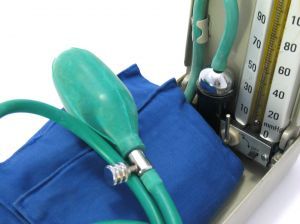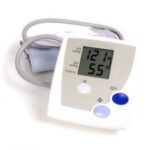When we think in terms of blood pressure, we often think of people suffering from high blood pressure, better known as hypertension. While hypertension is a very serious matter, the effects of having hypotension, or low blood pressure may not be well known, but still can pose a significant risk to a person’s health.
As I mentioned in this article, blood pressure is measured by using a sphygmomanometer, or in common terms, a blood pressure cuff. The cuff is usually wrapped around the arm of a person, right above the bend of the arm and is lined up with the brachial artery. If the blood pressure is being taken manually, then a stethoscope is places on the artery and the blood pressure cuff is pumped up. The person who is taking the blood pressure will listen through their stethoscope, the first time that they hear a whooshing or thumping sound it will be considered the top number, or the systolic pressure. This will continue on until the person taking the blood pressure cannot hear the thumping sound any longer. The last time that they hear the thumping sound will be considered the bottom number, or the diastolic blood pressure.
A person who has a systolic blood pressure of 120 and a diastolic blood pressure of 80 is considered “normal” or having high blood pressure. This is the range that is considered to be safe by the American Heart Association. While anything under that could be considered low blood pressure, it is important to remember that some people may be able to function with low blood pressure or it may be common from them to have low blood pressure.
If a person normally has low blood pressure, the signs and symptoms of having low blood pressure may not be as pronounced and may go unrecognized, mistaking these for signs and symptoms of other medical conditions. However, if a per who normally has high blood pressure, experiences a bout of hypotension, or low blood pressure, they may experience these to common symptoms:
1. Dizziness or lightheadedness
2. Feeling faint or dizzy upon going from sitting to standing position (this is also known as orthostatic hypotension)
If a person is experiencing a new onset of low blood pressure, it is important to communicate this with your doctor or physician immediately. Low blood pressure can be a sign of the following:
1. Dehydration
2. Moderate or severe bleeding
3. Inflammation of the body’s organs.
It is also important to note that people who are suffering from heart disease or who take certain medications may also experience low blood pressure due to those reasons. However, it is always important to report any new findings to your doctor or physician.
Low blood pressure, if not properly monitored or checked can become a very serious medical issue. Since the body is not receiving the proper supply of blood where it is needed, the organs, such as the brain, kidney, and heart may become damaged and lead into failure of these essential body organs.
It is important to note that people who do have low blood pressure have decreased their risk of stroke, heart attacks, and other medical issues. However, when a person experiences constant low blood pressure and experiences the two important symptoms above, it is important to check with one’s physician to make sure that the body is functioning properly and that there is not a larger underlying medical issue.
Sources
Medicine.net Low Blood Pressure (Hypotension)




